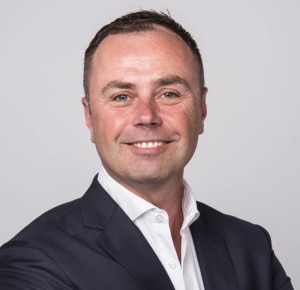
The fragmentation of budgets is seeing media dollars split between dozens of companies and the race towards cheap inventory is costing digital media its reputation, argues Fairfax chief revenue officer Matt Rowley.
“Marketers are understandably frustrated with the state of digital marketing right now. There’s confusing metrics, issues with viewability, brand safety concerns and questionable effectiveness,” he tells AdNews.
“The market has become far more competitive with publishers and platforms and even tech providers vying for advertisers’ money. That should be a positive thing for advertisers, but the more I talk to CMOs and CEOs the more it’s clear they are becoming frustrated. They are seeing investment in the top of the funnel but it’s become so fragmented that they struggle to see what they’ve got out of their investment.”
Rowley was promoted from his role of chief development officer at Fairfax to replace former chief revenue officer Tom Armstrong in April this year.
Since he started, he has been working on the planning and implementation of Fairfax’s new commercial strategy with a team of 45 IT, development and commercial staff.
He created the team outside of Fairfax’s Pyrmont offices, instead working in an office space in Surry Hills. This was a deliberate move to shake the shackles of Fairfax's legacy systems and build something entirely new.
Last year Domain also moved away from the main Fairfax hub in favour of its own set-up. See here.
Part of Rowley's strategy, and a response to the fragmentation of media budgets, has been to recruit staff into new roles that will work directly with agencies and the clients. Fairfax also recruited category specialists who work across key client verticals including travel, finance, auto and retail and will often work within the client's offices.
“People are questioning the value of digital, but the value is undeniably there. However, there has been a mismatch between the opportunity and what clients are seeing, which is where we think we can help by creating a more direct relationship with clients,” Rowley says.
“When we work with agencies directly we are able to have better strategic conversation and create a more powerful outcome because clients understand where their media is going.”
Rowley hopes that by being involved in early discussions with clients, Fairfax will be able to get a greater share of their media budget.
“In the old days, you might take $500,000 and divide it three or four times across publishers, TV and radio. Now, you divide it 20 times and the amount of cash you invest doesn’t amount to the same value. Marketers think by putting lots of little bits into publishers that they will get more from their investment, but the sums of the part aren’t adding up,” he says.
He gives the example of a large client which approached Fairfax last year with a media plan that was already about to be finalised. Fairfax passed on the brief after seeing the number of publishers the client was working with. A year later, the client consulted Fairfax at the beginning of the planning discussions and it has resulted in the client meeting their business goals, as well as Fairfax working with the brand across several different mediums.
“There are a lot of great things about digital, but people need to stop talking about the cost and start looking at the value. It’s not about how cheap you can by inventory if you are going to land your content in an unsafe ecosystem,” Rowley says.
“The problem is people think a view is a view no matter where it is and that’s just not true.”
Have something to say on this? Share your views in the comments section below. Or if you have a news story or tip-off, drop us a line at adnews@yaffa.com.au
Sign up to the AdNews newsletter, like us on Facebook or follow us on Twitter for breaking stories and campaigns throughout the day.


